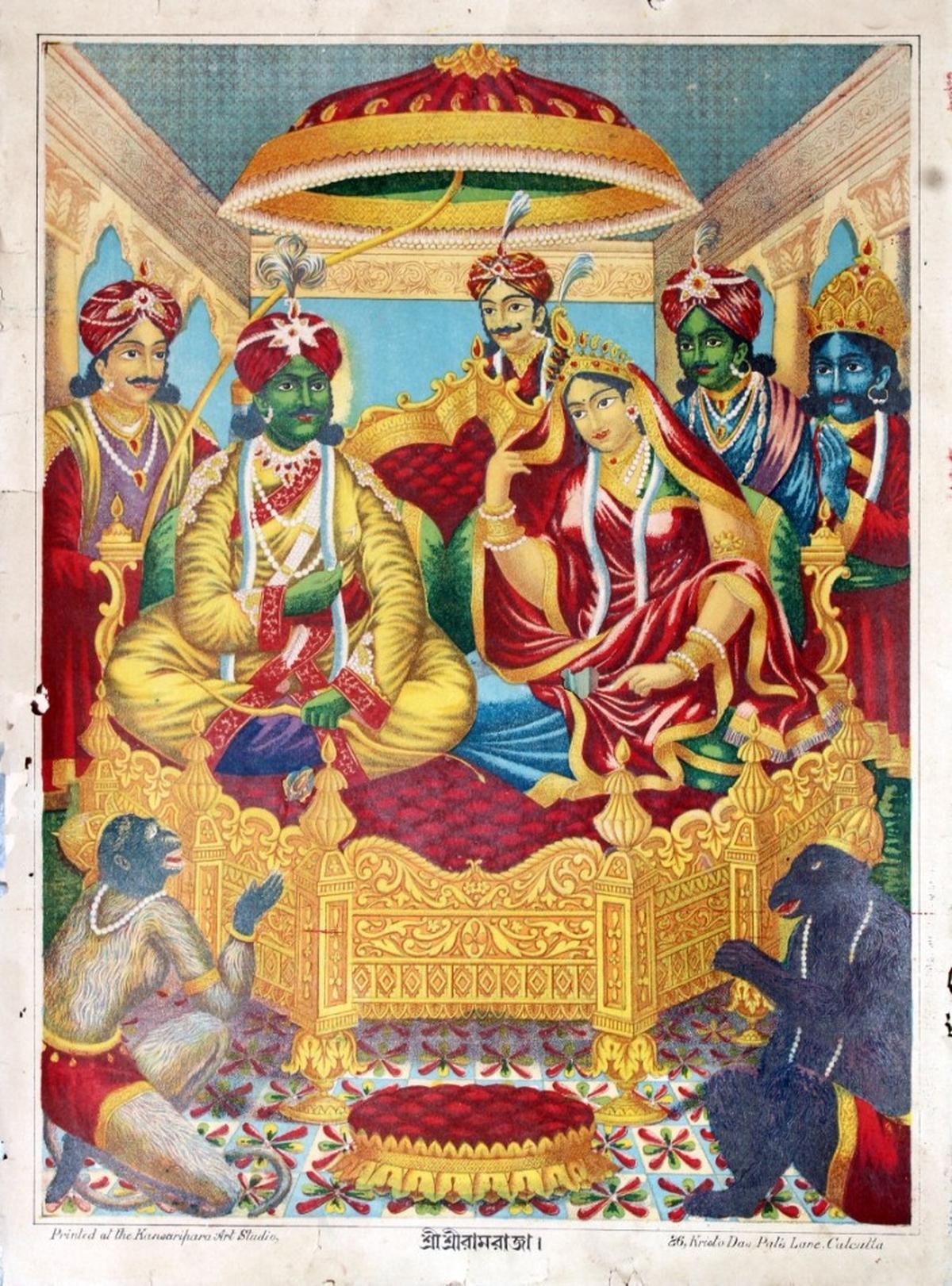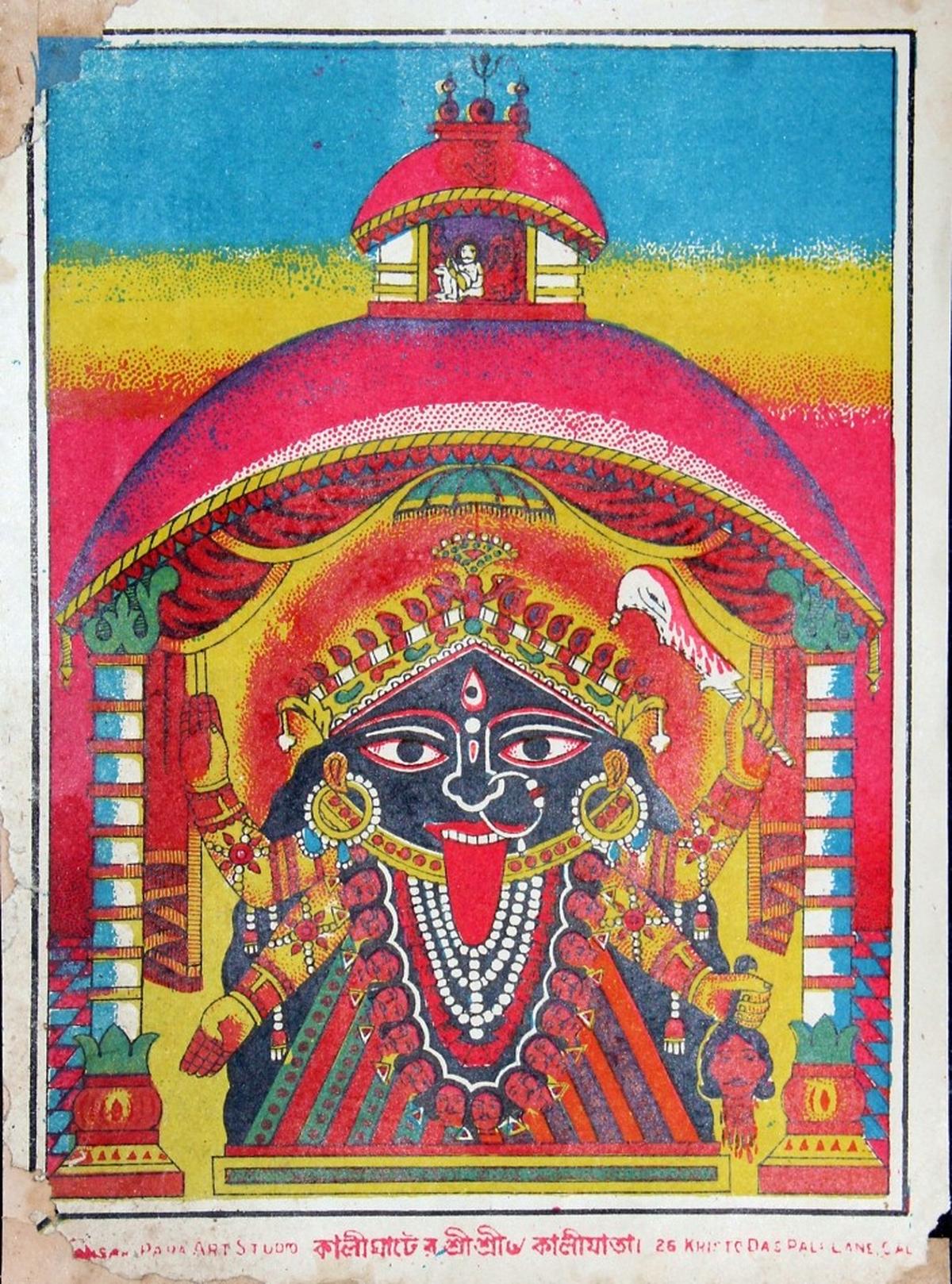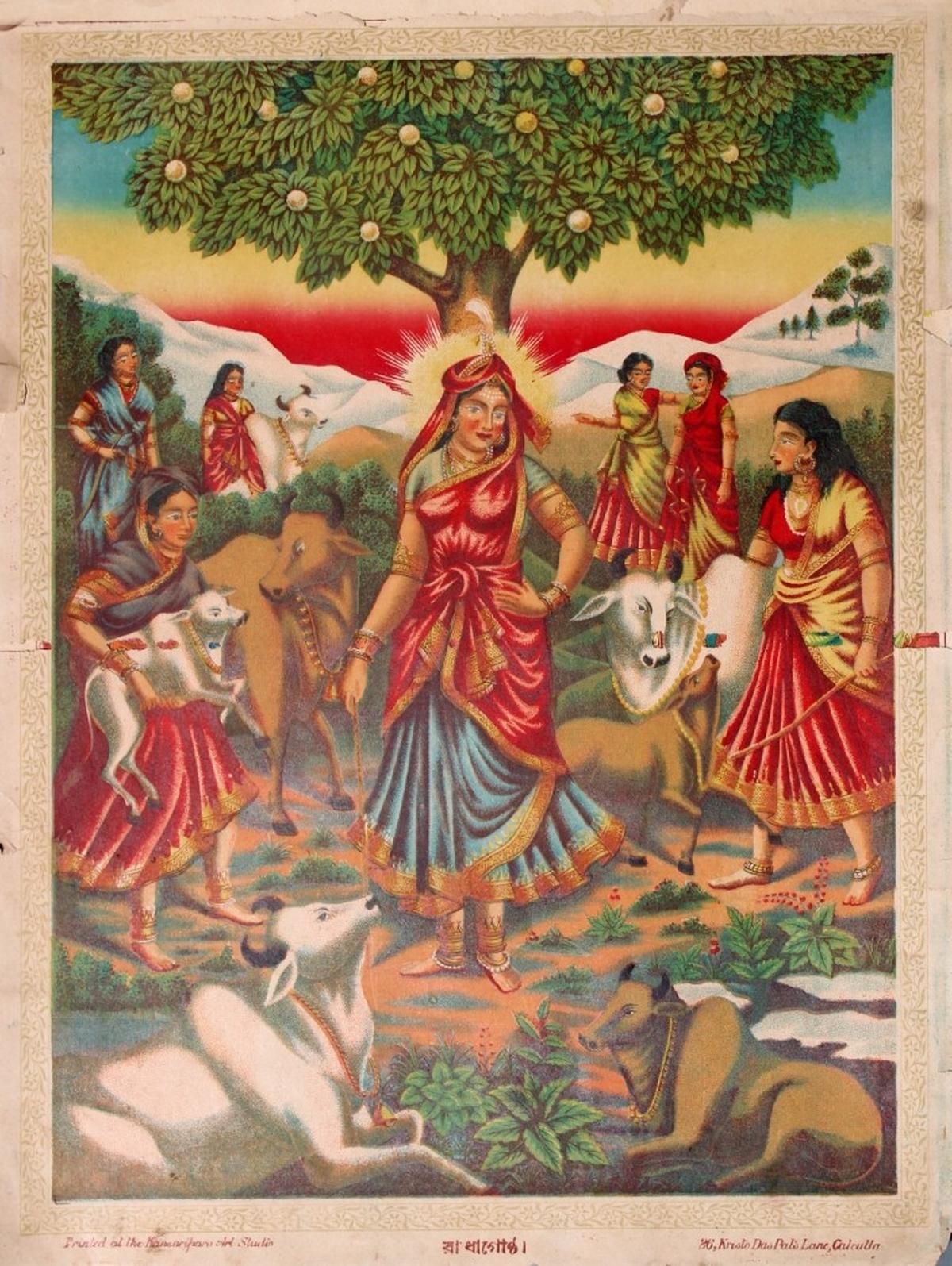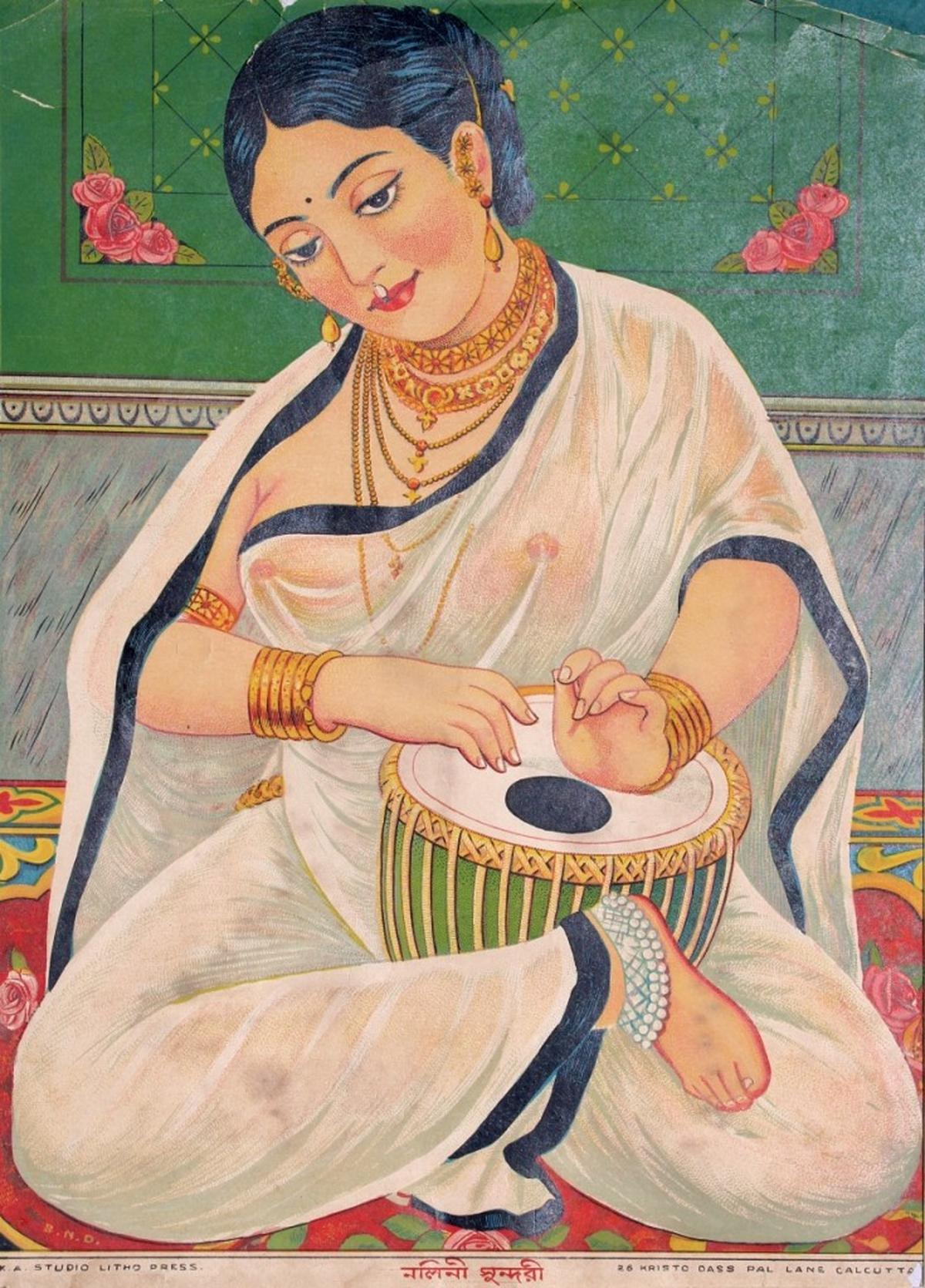A recent exhibition in the capital provides an unparalleled glimpse into a pivotal chapter of India’s visual history, where traditional religious art intersects with the modernity of print technology.
Management of Art Treasures of India (MATI)’s latest exhibition, ‘Chitpur Chronicles: A Journey through Sacred Imagery,’ showcases the oldest and rarest Chitpur lithographs. Chitpur Lithographs were a ground-breaking innovation that transformed the production and dissemination of images during the 19th and early 20th centuries. These 100-year-old rare prints, which represent a significant moment in India’s artistic evolution, primarily depict Hindu deities and mythological narratives, reflecting the rich cultural heritage of the Chitpur area of Kolkata. Unlike traditional hand-drawn or painted art, lithography allowed for the mass production of detailed and high-quality prints. This technique involved drawing images on limestone or metal plates using oil-based ink, which could then be transferred onto paper, creating multiple copies with relative ease and accuracy.
The poignant narrative of Abhimanyu-Uttara from the Mahabharata
| Photo Credit:
Courtesy: MATI
“Lithography enabled the dissemination of visual culture across different regions, creating a shared aesthetic and devotional experience. It played a key role in popularising religious imagery, ensuring that temples, households and public spaces could all house affordable, yet artistically valuable representations of divine and historical figures. This democratisation of art through lithography had a profound impact on cultural identity, religious practice and visual expression in India,” said Siddhartha Tagore, MATI’s founder.
The exhibition invites visitors to witness the divine presence of prominent Hindu deities, such as Beenapani (Saraswati) as well as Jagaddhatri Mata and Kalighater Sri Sri Kali Mata(Kali). The graceful Radha is portrayed in a piece titled Radha Gostho. Additionally, works such as Ganeshwari Mata and Shiva Parivar(depicting Shiva’s family) present familial and cosmic harmony. Further, the formidable Sri Sri Dashabhuja stands as a symbol of power and protection.
Mythological stories extend beyond the gods, with a powerful piece titled Papir Shasthi(Punishment to Sinner), a vivid portrayal of punishment in the afterlife. The exhibition also brings to life two rare scenes from India’s epic traditions: the poignant narrative of Abhimanyu-Uttara from the Mahabharata and Shri Shri Ram Raja (Ram Darbar) from the Ramayana, offering glimpses of both valour and divine rulership.

Shri Shri Ram Raja (Ram Darbar) from the Ramayana
| Photo Credit:
Courtesy: MATI
“Known for their distinctive artistic and cultural qualities, one of the defining features of Chitpur lithographs is the vivid use of colour, with vibrant, saturated hues that bring depictions of deities, mythological scenes and historical narratives to life, making the prints visually striking. The affordability and efficiency of lithographic printing revolutionised the way images, particularly religious and mythological ones, were shared with the public. These works, which were once accessible only to the wealthy, could now be produced in large numbers, reaching a broader audience, including the middle class,” said Gaurav Kumar, Curator, MATI.
One of Kolkata’s oldest neighbourhoods, Chitpur became the epicentre of the printing revolution in the 19th century, largely due to its strategic location, rich cultural heritage and flourishing artist community. Originally known for its traditional craftsmanship, theatrical performances and vibrant markets, it was an ideal breeding ground for artistic innovation and cultural exchange. As lithographic printing gained popularity in Bengal, Chitpur soon became the focal point for several renowned printing houses and studios.
Drawn by the area’s bustling commercial activity and proximity to the city’s growing middle class, various renowned studios harnessed this technology to create stunning depictions of Hindu deities, epic narratives and cultural icons. Each Chitpur studio developed its own signature style. The Chore Bagan Art Studio was known for its intricate and vivid depictions of mythological and religious subjects. Its attention to detail and vibrant compositions made its prints highly sought after.

Sri Sri Kali Mata
| Photo Credit:
Courtesy: MATI
Located in the heart of Kolkata, the Kansaripara Art Studio was well-known for its ability to infuse life into the depictions of divine figures, often embodying the deep religious sentiments of the masses. Lithographs from Chore Bagan Art Studio and Kansaripara Art Studio are also known for their exquisite detailing, especially in the intricate portrayal of jewellery, garments and expressions of Hindu deities, capturing divine and narrative elements with great precision. Calcutta Art Studio (Litho Press) also contributed significantly to the era’s visual narrative, producing lithographs that were marked by precision and artistic finesse.
“Each of these studios was instrumental in shaping the visual culture of the time, producing a wide array of works that catered to religious and cultural demands. Together, these studios created a visual legacy that not only represented religious devotion but also reflected the socio-cultural environment of Bengal during the late 19th and early 20th centuries,” said Siddhartha Tagore.

The graceful Radha is portrayed in a piece titled ‘Radha Gostho’.
| Photo Credit:
Courtesy: MATI
As a result, Chitpur was transformed into a thriving artistic hub, where tradition and modern technology intersected. The printing revolution in Chitpur became a cultural movement that democratised art, making it accessible to a much wider audience, and cemented Chitpur’s legacy as a cornerstone of Kolkata’s artistic and historical landscape.
“Chitpur’s role in this revolution was bolstered by the influx of skilled artisans and technicians who specialised in lithography. These studios not only employed local talent but also became centres for learning and innovation in printmaking. The neighbourhood’s lithographs, marked by their vibrant colours and artistic intricacy, became widely recognised and collected, contributing to the spread of visual culture throughout Bengal and beyond,” said Gaurav Kumar.

This lithograph shows the progressive outlook of the artists of the region.
| Photo Credit:
Courtesy: MATI
Chitpur Chronicles: A Journey Through Sacred Imagery will continue till 30th September at Naivedyam basement, Hauz Khas Village, New Delhi.
Published – September 19, 2024 04:58 pm IST
